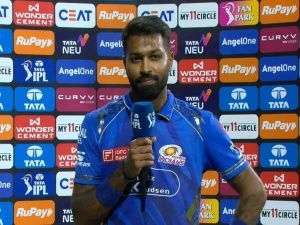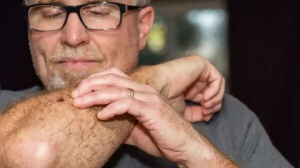Suryakumar Yadav, the celebrated cricketer, recently underwent surgery in Europe for a sports hernia. The athlete shared an update on his Instagram, stating, "Underwent surgery for a sports hernia in the lower right abdomen... Grateful to share that after a smooth surgery, I’m already on the road to recovery. Can’t wait to be back." But what exactly is a sports hernia, and how does it differ from a regular hernia? Let's delve into the details.
What is a Sports Hernia?
A sports hernia, also known as athletic pubalgia, is a painful injury affecting the soft tissues in the lower abdomen or groin area. Unlike a traditional hernia, a sports hernia doesn't present as a visible bulge. Instead, it involves tears or strains in the muscles, tendons, or ligaments around the groin, resulting in persistent pain that intensifies with sudden movements.
Who's at Risk?
Sports hernias commonly affect athletes like Suryakumar Yadav, who participate in sports that demand frequent changes in direction, twisting motions, or intense forceful movements, such as batting and fielding.
The key difference between a sports hernia and a traditional inguinal hernia lies in its presentation. While an inguinal hernia involves an organ or tissue pushing through a weakened muscle, creating a visible lump, a sports hernia involves a tear or weakness in the muscles or tendons without any noticeable bulge. This makes sports hernias challenging to diagnose, but they can cause significant pain and discomfort, especially during physical activity.
Recognizing the Symptoms
The primary symptom of a sports hernia is pain in the groin or lower abdomen. This pain may manifest suddenly at the time of injury or develop gradually over time due to repetitive movements. Be aware of the following indicators:

The absence of a bulge and the widespread nature of the pain often make it difficult to pinpoint the precise location of the hernia. Stiffness and soreness may also occur after sports or exercise, hindering the ability to continue the activity.
Understanding the Causes
Sports hernias are typically caused by repetitive movements that strain the muscles and tendons in the lower abdomen and groin. The injury occurs when these soft tissues are stretched or torn due to sudden twisting of the pelvis.
Common causes include:
Treatment Options
Treatment for a sports hernia depends on the severity of the injury. Possible approaches include:

Newer articles
Older articles
 Esha Gupta Sets Record Straight: Actress Addresses Hardik Pandya Dating Rumors
Esha Gupta Sets Record Straight: Actress Addresses Hardik Pandya Dating Rumors
 Google Maps to Boost Navigation Accuracy with Fused Orientation Provider API
Google Maps to Boost Navigation Accuracy with Fused Orientation Provider API
 Global Vaccination Rates Plunge: Millions of Children Now Vulnerable to Preventable Diseases
Global Vaccination Rates Plunge: Millions of Children Now Vulnerable to Preventable Diseases
 Rishabh Pant: Greg Chappell Hails India Star as Cricket Revolutionary
Rishabh Pant: Greg Chappell Hails India Star as Cricket Revolutionary
 Skin Cancer Alert: How to Identify Suspicious Moles and Early Warning Signs
Skin Cancer Alert: How to Identify Suspicious Moles and Early Warning Signs
 Gavaskar Calls for Kuldeep Yadav's Inclusion in Second Test Amid Bumrah Fitness Concerns
Gavaskar Calls for Kuldeep Yadav's Inclusion in Second Test Amid Bumrah Fitness Concerns
 Is Daily Pooping a Must? Understanding Bowel Regularity and When to Worry
Is Daily Pooping a Must? Understanding Bowel Regularity and When to Worry
 Suryakumar Yadav's Sports Hernia: Understanding the Injury, Recovery, and Risk Factors for Athletes
Suryakumar Yadav's Sports Hernia: Understanding the Injury, Recovery, and Risk Factors for Athletes
 Vijay Sethupathi Apologizes Amid Controversy Over Son Surya's Debut Film 'Phoenix' and Alleged Video Removal Pressure
Vijay Sethupathi Apologizes Amid Controversy Over Son Surya's Debut Film 'Phoenix' and Alleged Video Removal Pressure
 Install Baccarat Hack Tool: The Secret to Winning
Install Baccarat Hack Tool: The Secret to Winning